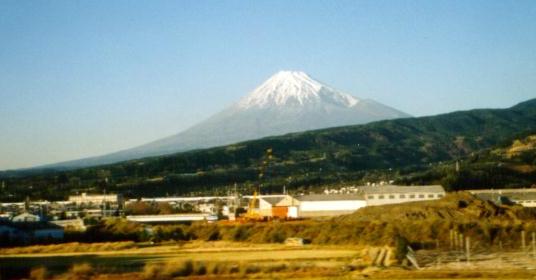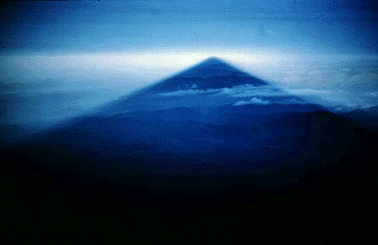
View of Fuji from the Bullet Train. The crater on the flank was created by the 1707 eruption.
Photograph courtesy of Mike Lyvers.
Mount Fuji is the archetype of the stratovolcano and probably rivals Vesuvius for the best-know volcano. The volcano rises about 3,500 m above the surrounding plain. Fuji has erupted at least 16 times since 781 AD. Most of these eruptions were moderate to moderate-large in size. The most recent eruption was in 1707-1708 from a vent on the southeast side of the cone. The eruption ejected 0.8 cubic km of ash, blocks, and bombs. Five historic eruptions have caused damage, including the 1707-1708 eruption, but no fatalities. Fuji had two large eruption (VEI=5) in 1050 and 930 BC.

Fuji's summit and crater. Photographs courtesy of Mike Lyvers.

Fuji's crater.

Fuji's crater.

Fuji's summit and crater.

A long line of climbers ascending Fuji.

A long line of climbers ascending Fuji.

Space Shuttle photo of snow-capped Fuji. Hakone caldera is to the right.


Mt. Fuji is even on the currency of Japan!

Mount Fuji is famous for its perfectly symmetrical cone. This photograph shows the shadow of Fuji projected of the adjacent countryside at sunrise. This photograph, taken in May of 1962, is copyrighted by Robert Decker.